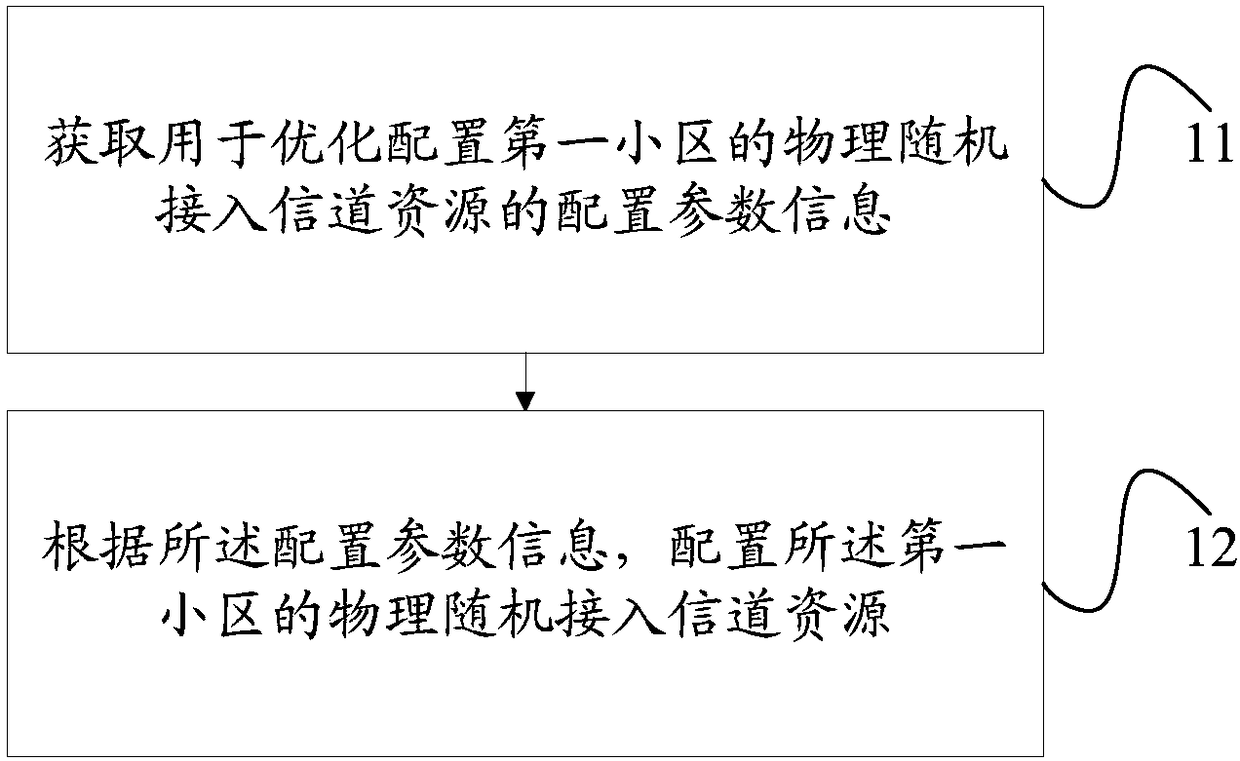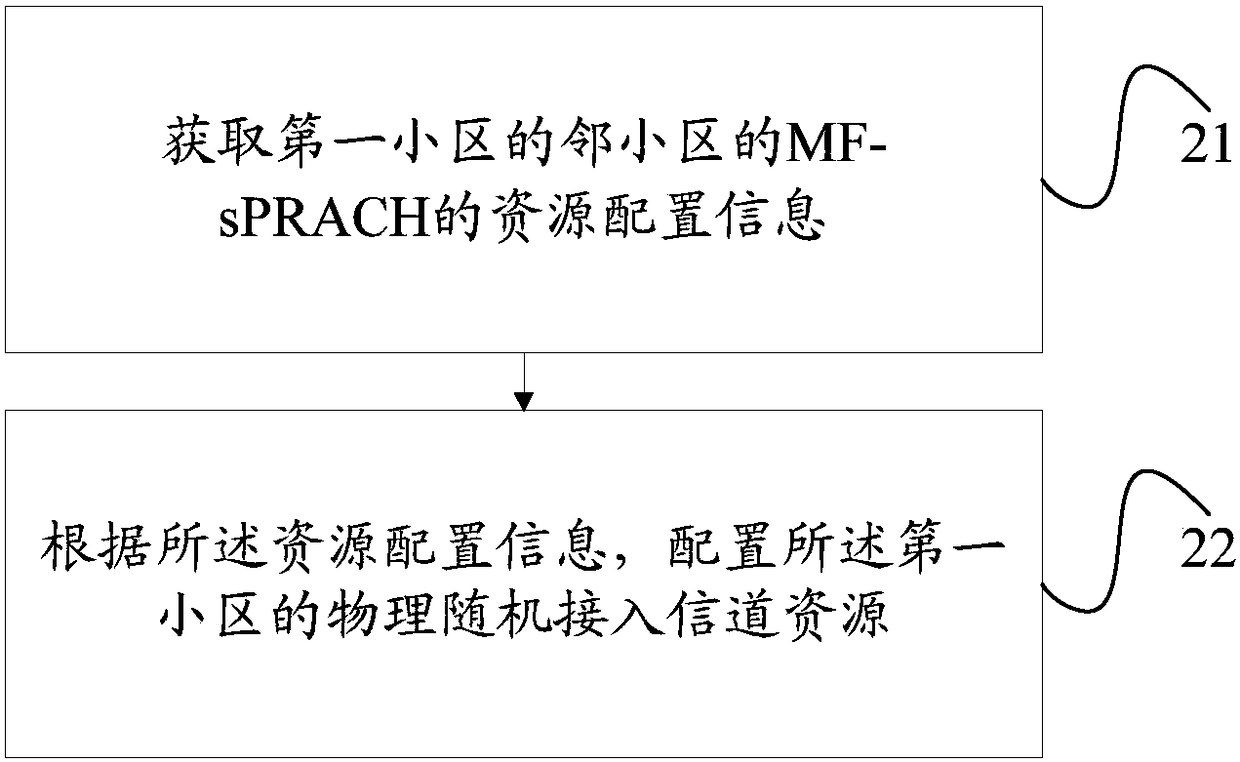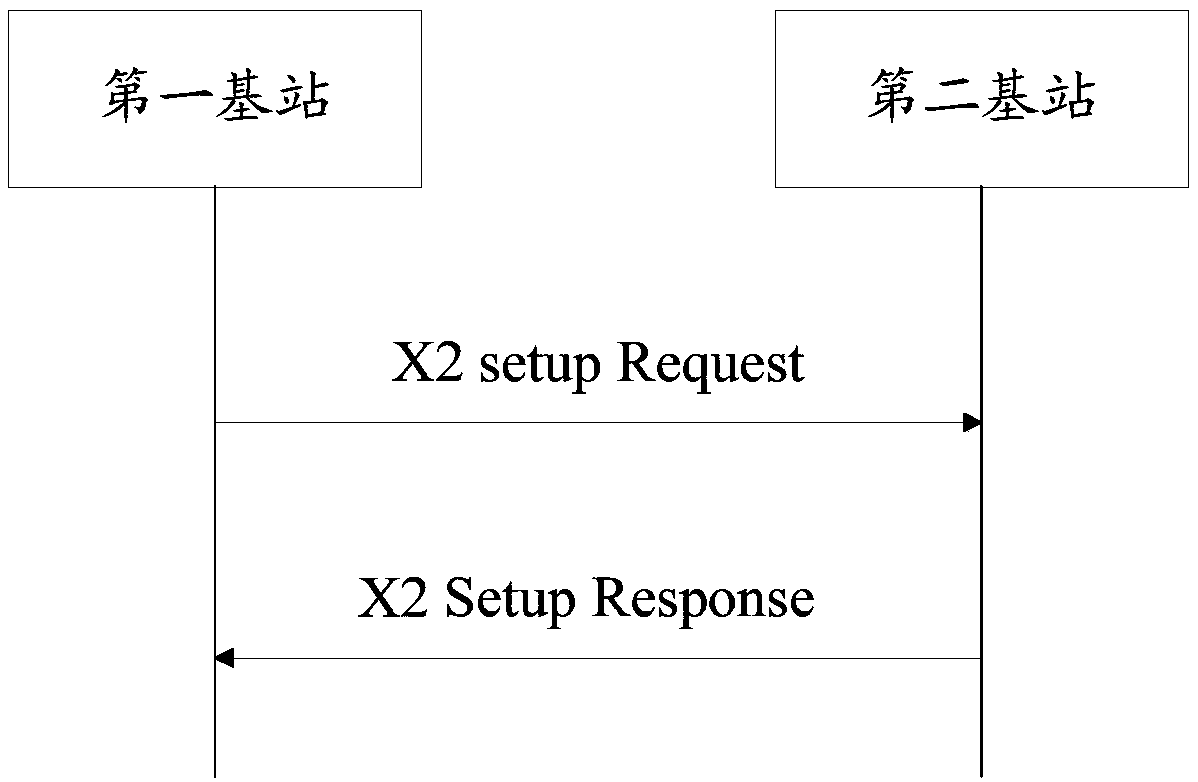Resource configuration method, information sending method, base station and terminal
A technology for resource allocation information and resource allocation, applied in the field of base stations, terminals, and resource allocation, can solve the problems affecting the success probability of random access, reduce the preamble detection performance, etc., and achieve the effect of improving the detection performance and the success probability.
- Summary
- Abstract
- Description
- Claims
- Application Information
AI Technical Summary
Problems solved by technology
Method used
Image
Examples
no. 1 example
[0066] like figure 1 As shown, the first embodiment of the present invention provides a resource allocation method, which is applied to the first base station to which the first cell belongs, including:
[0067] Step 11, obtaining configuration parameter information for optimally configuring physical random access channel resources of the first cell;
[0068] Wherein, the configuration parameter information includes: the resource configuration information of the MulteFire short physical random access channel (MF-sPRACH) of the neighbor cell of the first cell and / or the random access channel (RACH, Random Access Channel) information of the first cell ; Wherein, the resource configuration information of the MF-sPRACH of the neighbor cell of the first cell may be obtained by the first base station from the second base station, or obtained by the first base station from the information reported by the terminal; the RACH information of the first cell It is statistical information ...
no. 2 example
[0073] like figure 2 As shown, the second embodiment of the present invention provides a resource allocation method, which is applied to the first base station to which the first cell belongs, including:
[0074] Step 21, obtain the resource configuration information of the MF-sPRACH of the neighboring cell of the first cell, wherein the resource configuration information includes: the position of the MF-sPRACH frequency domain resource block, the number of frequency domain resource blocks occupied by the MF-sPRACH, and the MF - at least one of the listen-before-talk LBT types of sPRACH;
[0075] It should be noted that the first cell generally refers to the serving cell of the first base station, that is, the cell served by the first base station, and the adjacent cell of the first cell is generally a cell that does not belong to the first base station (that is, the cell of the first base station Neighboring cells of a cell are cells belonging to other base stations adjacen...
no. 3 example
[0146] like Figure 5 As shown, the third embodiment of the present invention provides a resource allocation method, which is applied to the first base station to which the first cell belongs.
[0147] It should be noted that the first base station in this embodiment specifically refers to an MF base station, that is, the first cell is an MF cell, and the resource configuration method includes:
[0148] Step 51, receiving the random access channel information of the first cell reported by the terminal, the random access channel information including: the number of times the terminal fails to listen before talking (LBT) when randomly accessing in the first cell;
[0149] It should be noted that the first cell refers to the cell currently accessed by the terminal, the first base station may send a random access channel information request message to the terminal, and when the terminal receives the random access channel information request message, record The random access chann...
PUM
 Login to View More
Login to View More Abstract
Description
Claims
Application Information
 Login to View More
Login to View More - R&D
- Intellectual Property
- Life Sciences
- Materials
- Tech Scout
- Unparalleled Data Quality
- Higher Quality Content
- 60% Fewer Hallucinations
Browse by: Latest US Patents, China's latest patents, Technical Efficacy Thesaurus, Application Domain, Technology Topic, Popular Technical Reports.
© 2025 PatSnap. All rights reserved.Legal|Privacy policy|Modern Slavery Act Transparency Statement|Sitemap|About US| Contact US: help@patsnap.com



